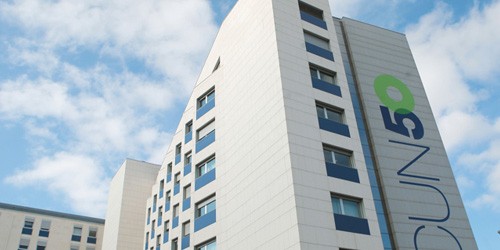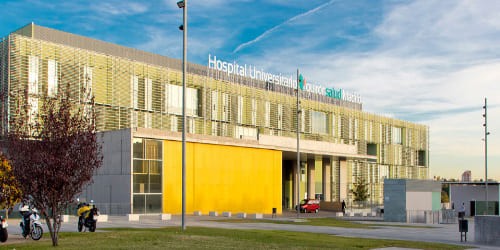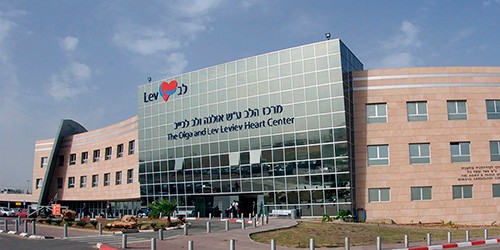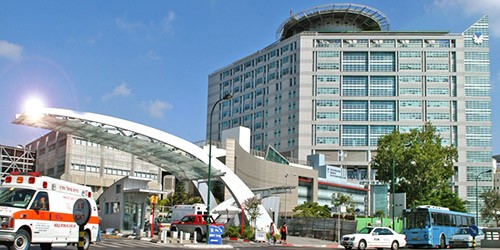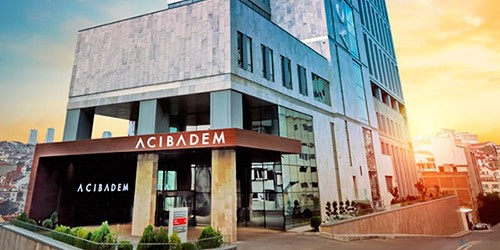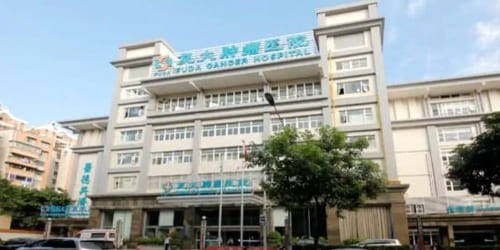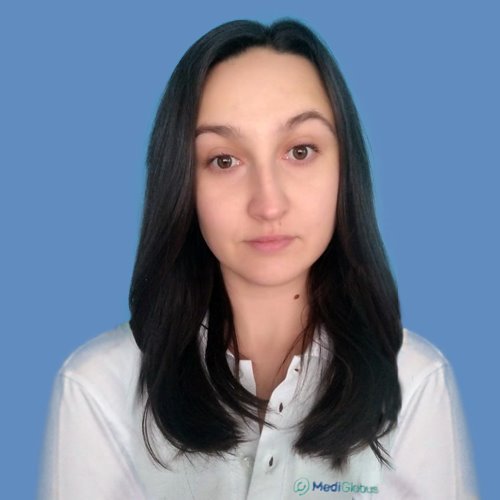1. Benefits of CAR-T therapy |
2. Indications for CAR-T therapy |
3. How does it work? |
4. The procedure |
5. Recovery from treatment |
6. Treatment prognosis |
7. Leading clinics |
Acute lymphoblastic leukaemia (ALL) is one of the most common blood cancers in children. It can also affect adults of different ages. Combination chemotherapy is the main treatment of the disease and it is typically used until remission occurs. Radiation, stem cell transplantation and targeted therapy are recommended for some patients. Prolonged use of chemotherapeutic agents, as well as other treatment options, do not always yield positive results and sometimes harm the patient’s general state of health. CAR-T cell therapy may be a good alternative to chemotherapy and other methods of treatment for ALL. Read more about this treatment for acute lymphoblastic leukaemia in this article.
Listen to the article:
The benefits of CAR T-cell therapy
CAR T-cells make it possible to achieve remission that will last for years. They help patients with relapsed and advanced leukaemia that cannot be treated by other methods.
The effects of this therapy last for several years. T-cells can stay in the body for a long time, recognising and attacking malignant foci in case of relapse.
The therapy takes little time to carry out. It takes approximately two weeks of inpatient treatment to create and administer a single dose of modified T cells.
Recovery from T-cell therapy is easier than from stem cell transplantation or long-term chemotherapy. This is because aggressive chemotherapy is not used for this type of treatment, unlike bone marrow transplantation.
For more information on CAR-T therapy, and the benefits and intricacies of the method, please contact your MediGlobus coordinating physician. Click on the button below and fill in the feedback form.
When is CAR-T cell therapy indicated for ALL?
Acute lymphoblastic leukaemia is an aggressive malignant pathology that develops rapidly, affecting the blood and bone marrow. Most cases of the disease occur in children and adolescents.
To achieve the best possible survival rate, treatment should be started as soon as possible. But it is not always possible to control or eliminate the disease with chemotherapy or other methods. 2-5% of patients show resistance to the drugs, and 15-20% soon relapse.
If cancer has returned after chemotherapy, targeted therapy, radiation and even stem cell transplantation, reusing the same methods will not work. T-cell therapy may therefore be the only chance of survival.
CAR T-cell therapy is FDA-approved for the treatment of children and adolescents with advanced or relapsed B-cell acute lymphoblastic leukaemia (ALL). It can also be used to treat adult patients under 40 years of age. One such CAR-T drug is Kymriah. Kymriah affects a malignant cell protein, the CD19 antigen. The drug is given intravenously.
How does CAR-T cell therapy work?

The CAR-T method combines immunotherapy, gene therapy and cell therapy. This is a new level in the fight against blood cancers. The basic principle of CAR-T therapy is to ‘activate’ the immunity to find and destroy cancer cells. The patient’s blood is used for this purpose.
Lymphocytes are separated from a blood sample in a laboratory using special techniques. They are then genetically modified by attaching chimeric antigen receptors (CARs) to their surface. The genetically modified T cells are multiplied to several millions and then injected back into the patient’s body.
Modified T-lymphocytes are ‘trained’ to recognise malignant foci, accurately distinguishing them from healthy tissue. Once they have detected cancer, they attach themselves to its surface (specific protein CD19) and destroy the cancer cells.
How is acute lymphoblastic leukaemia treated with T-cell therapy?
T-cell therapy involves several steps. First, a peripheral blood sample is taken from the patient. This procedure is called leukapheresis. During it, the patient usually sits in a special chair. Two catheters are used to separate the white blood cells and return the blood into the patient’s body. Sometimes a single central venous catheter can be used for this purpose.
The blood collection procedure takes 2-3 hours. Some patients may therefore experience a decrease in their calcium levels in the blood. This is manifested by tingling in the fingers, numbness in the limbs and muscle cramps. To restore the calcium deficiency, it is administered intravenously or pills are prescribed to the patient.
T-lymphocytes are isolated from the blood sample in the laboratory, processed, multiplied and, if necessary, frozen. This can take anywhere from 7-10 days to several weeks. During this time, the patient receives a short course of chemotherapy with one or more drugs. The chemo will reduce the number of other immune cells and give CAR-T agents a better chance to activate to fight leukaemia.
Introducing T-cells into the patient’s body is similar to a blood transfusion. It is painless and easily tolerated by the patient. One infusion is usually enough, but some patients may need more. A full course of treatment takes about 10 days.
After the injection, the T-cells continue to divide in the body and attack the tumour. This lasts for several years. Therefore, the effect of the treatment does not appear immediately, but gradually.
T-cell therapy for acute lymphoblastic leukaemia in adults does not differ from that in children. However, it is worth bearing in mind that this treatment is not used to treat the elderly.
After CAR-T therapy
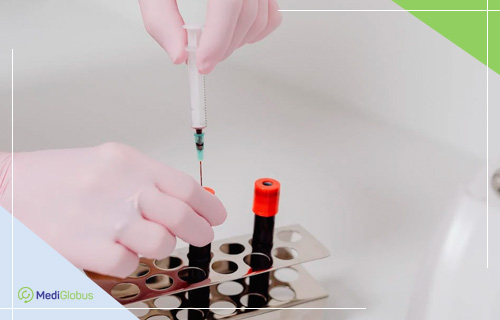
After CAR-T, the patient stays in the clinic for 1-2 weeks. They then have to undergo regular check-ups and see the doctor for another month. This is to check for any complications and to evaluate the effectiveness of the treatment.
During the initial period of T-cell therapy, about half of the patients experience flu-like symptoms. They complain of nausea, tiredness, body aches, chills and fever. They may have cramps and headaches. These symptoms subside on their own with time or are alleviated with medical treatment.
Some patients develop more serious side effects, such as lower blood pressure, tachycardia, hypoxia and neurological disorders (problems with speech, coordination, memory, and changes in consciousness).
Almost all complications of T-cell therapy are reversible if detected in time. Full recovery after CAR-T treatment of acute lymphoblastic leukaemia takes about three months.
Can acute lymphoblastic leukaemia be cured with CAR-T therapy?
Without proper therapy, ALL is fatal within a few months. However, a comprehensive approach to treatment and timely therapy can successfully counteract it. The prognosis for neglected or relapsed acute lymphoblastic leukaemia with T-cell therapy is promising. Approximately 85% of patients who have received CAR-T infusion achieve sustained remission.
Where can I get treatment for acute lymphoblastic leukaemia with CAR-T cells?
Not all clinics offer treatment with CAR-T. It is available in major medical centres in Israel, Spain, Turkey and other countries with advanced medical care. These include:
Summary
Treatment of acute lymphoblastic leukaemia with T-cell therapy is a worthwhile alternative to existing treatment options. It’s a very promising approach to fighting ALL, even when all previous cancer therapies have had little or no effect.
CAR-T cell therapy involves injecting genetically modified T-lymphocytes derived from the patient’s blood into the patient’s body. The procedure resembles a blood transfusion. It is painless and easily tolerated. Once in the bloodstream, CAR-T cells begin to divide. They look for malignant lesions and destroy them.
The effect of T-cell therapy is not immediate. The modified lymphocytes gradually become active and fight the cancer cells. Over several years, they prevent the relapse. Approximately 85% of patients with ALL achieve complete remission. In 60% of patients, the cancer cells have disappeared within 12 months of the treatment.
For treatment of acute lymphoblastic leukaemia with CAR-T cells, patients are most commonly referred to clinics in Israel, Spain, Turkey, China and other countries with a developed medical field. The leading hospitals in this field are considered to be: Sheba, Ichilov, Acibadem, Fuda, Navarra University Hospital and Quiron Madrid.
To be treated with CAR-T abroad, leave your application on our website. We will help you with your choice of clinic and doctor.
Sources
- National Cancer Institute
- American Cancer Society
- Cancer Gene Ther
- The Leukemia & Lymphoma Society (LLS)
- National Cancer Institute




